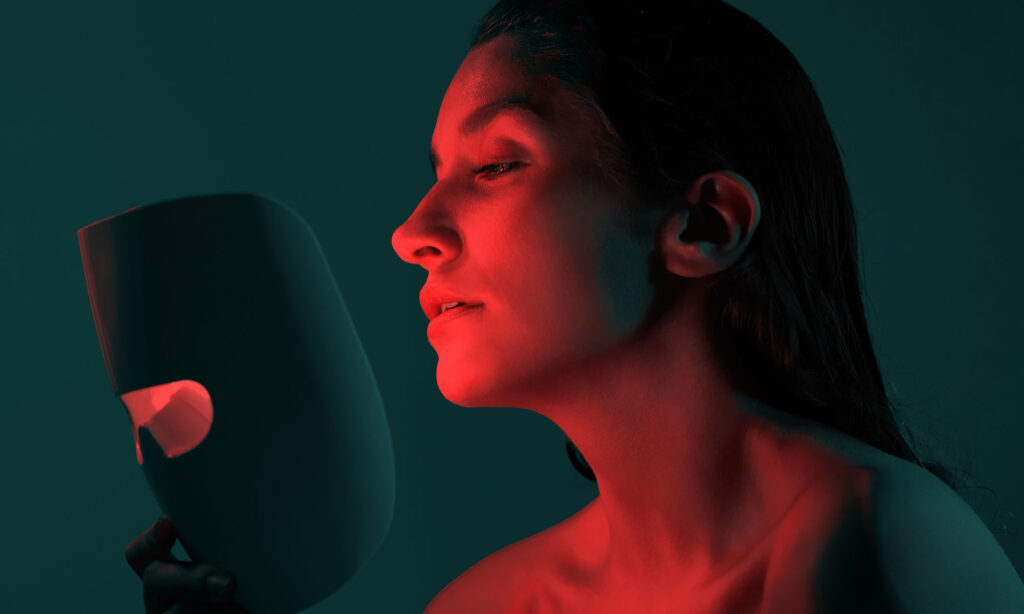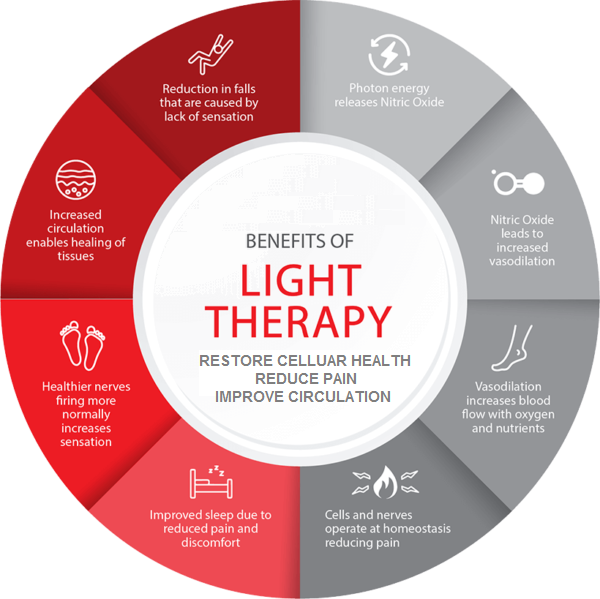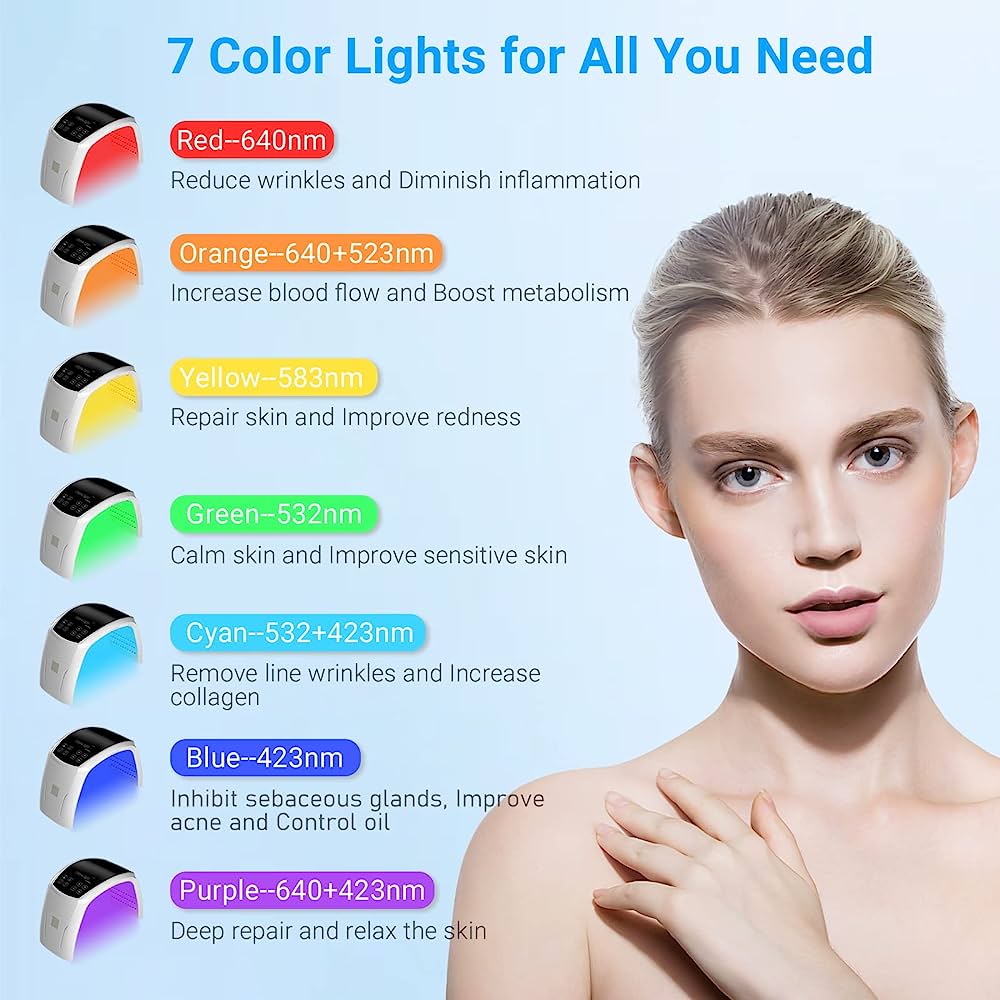In this article, we’re going to explore the topic of light therapy and its role in promoting wellness. You’ll learn how light therapy works and its potential benefits for various health conditions. We’ll also discuss the different types of light therapy available and how you can incorporate it into your daily routine. By the end, you’ll have a better understanding of how light therapy can positively impact your overall well-being.
Shining a Light on Healing: The Role of Light Therapy in Wellness
What is Light Therapy?
Light therapy, also known as phototherapy, is a non-invasive treatment that involves exposure to specific wavelengths of light. This therapeutic technique has gained popularity in recent years for its ability to positively impact various aspects of health and well-being. Whether you struggle with Seasonal Affective Disorder (SAD), sleep disorders, mood fluctuations, or even chronic pain, light therapy may offer a natural and effective solution.
How Does Light Therapy Work?
Light therapy works by exposing the body to intense levels of light that mimic natural sunlight. This exposure stimulates specific receptors in the eyes and skin, triggering biological responses within the body. These responses can help regulate the body’s internal clock, balance hormone levels, and promote the production of vitamin D.
This image is property of i.shgcdn.com.
Types of Light Therapy
There are several types of light therapy, each designed to target and treat specific conditions. The most commonly used forms of light therapy include:
1. Bright Light Therapy
Bright light therapy involves using a light box, which emits bright white light similar to natural sunlight. This type of therapy is often used to treat Seasonal Affective Disorder (SAD) and sleep disorders.
2. Dawn Simulation
Dawn simulation involves using a specialized light box that gradually increases in brightness, simulating the natural sunrise. This therapy is particularly helpful for individuals with sleep disorders and those who struggle with waking up in the morning.
3. Light Therapy Glasses
Light therapy glasses are portable devices that deliver specific wavelengths of light directly to the eyes. These glasses are often used to treat sleep disorders and jet lag, as they can help regulate the body’s internal clock.
4. Handheld Devices
Handheld light therapy devices are compact and convenient options for targeted treatment. These devices emit specific wavelengths of light and can be used to address a variety of conditions, such as acne, pain, and skin rejuvenation.
Benefits of Light Therapy
1. Treating Seasonal Affective Disorder (SAD)
As the days grow shorter and sunlight becomes scarcer during the winter months, many individuals experience Seasonal Affective Disorder (SAD). Symptoms may include fatigue, low mood, and sleep disturbances. Bright light therapy has been shown to alleviate these symptoms by regulating the body’s internal clock, boosting serotonin levels, and reducing melatonin production.
2. Managing Sleep Disorders
Light therapy can effectively treat sleep disorders such as insomnia and delayed sleep phase disorder. By exposing the body to bright light in the morning and avoiding bright light exposure in the evening, individuals can balance their circadian rhythm and improve sleep quality.
3. Improving Mood and Mental Health
Light therapy has been found to be beneficial for individuals struggling with depression, anxiety, and other mood disorders. By increasing serotonin production in the brain, light therapy can help reduce symptoms and improve overall mood and well-being.
4. Enhancing Skin Health
Certain types of light therapy, such as red and blue light therapy, have been shown to have positive effects on the skin. Red light therapy stimulates collagen production, reduces inflammation, and promotes wound healing. Blue light therapy, on the other hand, can effectively treat acne by killing the bacteria that cause breakouts.
5. Addressing Chronic Pain
Some studies have indicated that light therapy may have analgesic properties, making it a promising treatment for chronic pain conditions such as fibromyalgia, arthritis, and neuropathy. The exact mechanisms behind this pain relief are not yet fully understood, but it is believed that light therapy may reduce inflammation and stimulate tissue repair.

This image is property of www.soundbalancept.com.
The Science Behind Light Therapy
The Effect of Light on the Body
Light not only enables us to see but also plays a crucial role in regulating various bodily functions. The human body has specific light-sensitive receptors, called photoreceptors, located in the eyes and skin. These receptors communicate with the brain, signaling the body’s internal clock and influencing hormone production.
Melatonin and Circadian Rhythm
Melatonin, a key hormone involved in sleep-wake cycles, is heavily influenced by light exposure. Bright light exposure in the morning suppresses melatonin production, helping individuals feel more awake and alert. On the other hand, dim light exposure in the evening signals the body to prepare for sleep by increasing melatonin levels.
The Role of Light in Vitamin D Production
Sunlight is a natural source of vitamin D, a crucial nutrient that supports bone health, immune function, and overall well-being. When the skin is exposed to ultraviolet B (UVB) rays present in sunlight, it synthesizes vitamin D. However, insufficient sunlight exposure can lead to deficiencies, making light therapy a valuable alternative for vitamin D production.
Applications of Light Therapy
Treating Seasonal Affective Disorder (SAD)
Seasonal Affective Disorder (SAD) is a type of depression that occurs primarily during the winter months when sunlight is limited. Bright light therapy is an effective treatment for SAD, as it helps to balance mood, increase energy levels, and regulate sleep patterns.
Managing Sleep Disorders
In addition to SAD, light therapy can be used to manage various sleep disorders. By adjusting light exposure levels and timing, individuals can align their circadian rhythm, leading to improved sleep efficiency and overall sleep quality.
Improving Mood and Mental Health
Light therapy has been shown to have a positive impact on mental health, particularly in individuals experiencing depression, bipolar disorder, and seasonal mood fluctuations. By regulating serotonin levels and improving overall circadian rhythm, light therapy can help alleviate symptoms and improve mood and well-being.
Enhancing Skin Health
Light therapy is becoming increasingly popular as a non-invasive skincare treatment. Red light therapy stimulates collagen production, improving skin elasticity and reducing the appearance of fine lines and wrinkles. Blue light therapy, on the other hand, targets acne-causing bacteria, reducing breakouts and inflammation.
Addressing Chronic Pain
While the exact mechanisms are still being studied, light therapy has shown promising results in reducing chronic pain. By increasing blood flow, reducing inflammation, and stimulating tissue repair, light therapy can provide relief for conditions such as fibromyalgia, arthritis, and neuropathy.

This image is property of mindbodygreen-res.cloudinary.com.
Choosing the Right Light Therapy
When considering light therapy, several factors should be taken into account to ensure its effectiveness and safety.
Factors to Consider for Light Therapy
-
Intensity: Different conditions require different light intensities, so it’s essential to choose a therapy device that provides the appropriate output.
-
Wavelength: Different wavelengths of light have varying effects on the body. Consult a professional to determine the most suitable wavelength for your specific needs.
-
Duration: The duration of light therapy sessions varies depending on the condition being treated. Adhering to recommended durations ensures optimal results.
Consulting with a Professional
It is recommended to consult with a healthcare professional before starting light therapy, especially if you have any underlying medical conditions or are taking medication. A professional can provide guidance on the appropriate type of light therapy, dosage, and duration based on your unique circumstances.
Safety Precautions
While light therapy is generally safe, it’s crucial to follow safety guidelines and precautions to avoid potential side effects. Protect your eyes from prolonged exposure by wearing appropriate eye protection and avoid looking directly into the light source. Additionally, be mindful of any photosensitizing medications that may increase sensitivity to light.
Light Therapy Devices
Various light therapy devices are available on the market, each designed to target specific conditions and provide optimal results.
Light Boxes
Light boxes are the most commonly used type of light therapy device. They emit bright white light and are often used to treat Seasonal Affective Disorder (SAD) and sleep disorders. Light therapy boxes come in different sizes and intensities, allowing individuals to tailor their therapy according to their needs.
Dawn Simulators
Dawn simulators are specialized light boxes that gradually increase in brightness, simulating the natural sunrise. These devices are particularly helpful for individuals struggling with waking up in the morning, as they mimic the gradual light exposure experienced during sunrise.
Light Therapy Glasses
Light therapy glasses are portable devices that deliver specific wavelengths of light directly to the eyes. They provide a convenient solution for individuals on the go and help regulate the body’s internal clock. Light therapy glasses are often used to manage sleep disorders, jet lag, and shift work-related sleep disturbances.
Handheld Devices
Handheld light therapy devices are compact and versatile tools that can be used for targeted treatment. They are highly portable and provide localized light exposure for addressing specific conditions such as acne, pain, and skin rejuvenation.

This image is property of images.squarespace-cdn.com.
Using Light Therapy at Home
To incorporate light therapy into your daily routine, follow these guidelines for optimal results:
Creating a Light Therapy Routine
Establishing a regular light therapy routine is essential for maximizing the benefits of this treatment. Aim to have consistent exposure to light therapy, ideally at the same time each day. This routine helps regulate your circadian rhythm and ensures that light therapy becomes an integrated part of your wellness routine.
Finding the Ideal Time and Duration
The ideal time and duration of light therapy sessions may vary depending on the specific condition being treated. Consult with a healthcare professional to determine the recommended time and duration for your light therapy treatments. Typically, sessions range from 20-30 minutes, but this may vary depending on individual needs.
Setting up the Environment
Create an environment conducive to light therapy sessions. Place your light therapy device in a location where it can provide the necessary light exposure without causing discomfort. Ensure you have a comfortable seating or standing arrangement and engage in activities such as reading, meditation, or listening to music during your light therapy sessions.
Combining Light Therapy with Other Treatments
Light therapy can be effectively combined with other traditional and complementary treatments to enhance overall wellness.
Collaborating with Traditional Medicine
Light therapy can be used in conjunction with traditional medical treatments to supplement their effects. For example, light therapy may be used alongside antidepressant medications to augment their effectiveness in managing depression.
Integrating Light Therapy into Psychological Therapies
Light therapy can also be integrated into psychological therapies such as cognitive-behavioral therapy (CBT) or counseling. The combination of light therapy and psychological interventions can boost mood, regulate sleep patterns, and improve overall mental health.

This image is property of www.degreewellness.com.
Research and Evidence
Numerous studies have been conducted to evaluate the effectiveness of light therapy across various health conditions.
Current Studies on Light Therapy
Ongoing research aims to further understand the mechanisms and effectiveness of light therapy. Studies are exploring its potential use in conditions such as bipolar disorder, dementia, postpartum depression, and other psychiatric disorders.
Effectiveness and Limitations
While light therapy has shown promising results in many areas, its effectiveness may vary depending on individual circumstances. It is important to consult with a healthcare professional to determine the most appropriate type of light therapy and its potential limitations for your specific needs.
Promising Areas of Research
Researchers continue to explore the potential benefits of light therapy in new areas. Emerging research suggests that it may have positive effects on cognitive function, immune modulation, and even wound healing.
Common Myths and Misconceptions
Before considering light therapy, it is important to debunk some common myths and misconceptions associated with this treatment.
Light Therapy and Tanning Beds
Light therapy should not be confused with tanning beds or sunlamps, which emit harmful ultraviolet (UV) radiation. Light therapy devices used for medical purposes emit specific, safe wavelengths of light and do not expose individuals to dangerous levels of UV radiation.
Potential Side Effects
While light therapy is generally safe, some individuals may experience minor side effects such as headaches, eye strain, or mild irritability. These side effects are usually short-lived and diminish over time. It is important to follow safety guidelines and consult with a healthcare professional to minimize any potential risks.
Light Therapy as a Cure-all
While light therapy can be beneficial in various areas, it is not a cure-all for every condition. It is important to approach light therapy as a complementary treatment that can enhance overall wellness, rather than a standalone solution.
Conclusion
Light therapy offers a natural and effective way to improve various aspects of health and well-being. Whether you are struggling with Seasonal Affective Disorder (SAD), sleep disorders, mood fluctuations, or chronic pain, light therapy may be a valuable addition to your wellness routine. By understanding the science behind light therapy, exploring its applications, and choosing the right devices and treatments, you can harness the healing power of light to enhance your overall wellness and quality of life.
